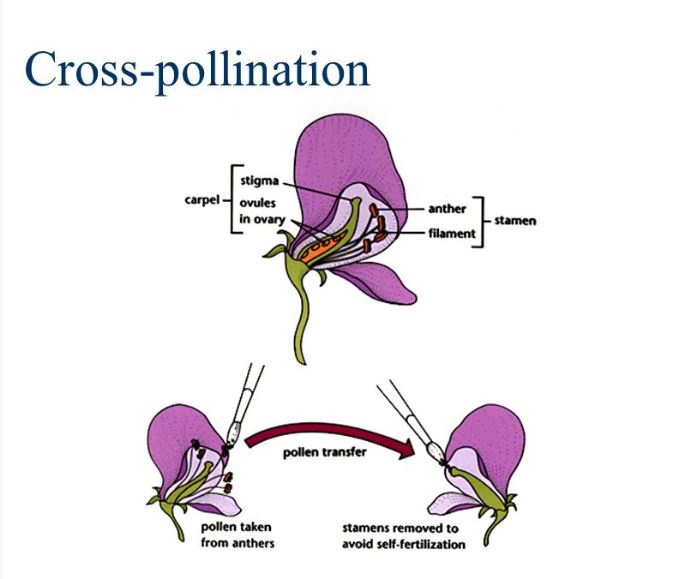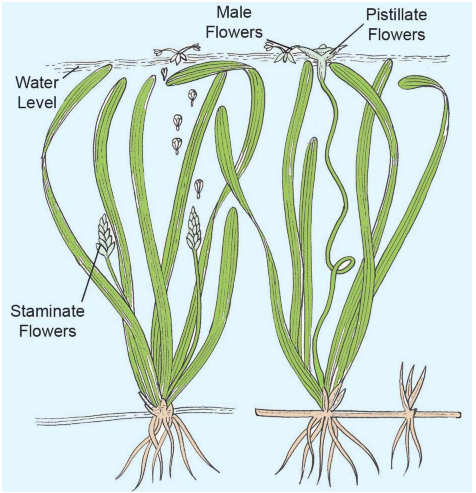Introduction.
Pollination is the transfer of pollen grains from the anthers, the male part of the flower to the stigma, the female part of a flower. The goal of any living thing is to produce offspring; hence, flowering plants use this process to produce. This process enables the plant to produce seeds containing genetic information for new plant production.
Pollination is mainly divided into two types:
- Self-pollination
- Cross-pollination
Self-pollination.
This is the transfer of pollen from the anthers of a flower to the stigma of the same flower. It is common in hermaphrodite plants which contain both the female and male parts on the same flower. Since the process occurs within the same flower, it is less dependent on external factors. These plants depend on insects looking for nectar and wind for the transfer of pollen. In these flowers, both the stigma and the anthers are of the same height for easier transfer of pollen grains.
Self-pollination is further divided into:
- Geitonogamy– involves the transfer of pollen grains from the anthers of one flower to the stigma of another flower.
- Autogamy– involves the transfer of pollen grains from the anthers of a flower to the stigma of the same flower.
Cross-pollination.

The pollen is transferred from the anthers of one flower to the stigma of another flower. It is dependent on the agents of pollination such as birds, water, and wind. It can be divided into different types based on the agent involved in the transfer as follows:
- Hydrophilous flowers– the agent involved is water, which carries the pollen across the two flowers involved. The pollen has special adaptations to float on water.

- Zoophilous flowers– the agents involved are animals such as bats, birds, and human being, etc. the pollen of such flowers is designed to stick on the body of an animal for easy transfer.
- Anemophilous flowers– the wind is the agent used in the transfer of pollen. Such flowers are usually small and inconspicuous. The pollen grains are very light, non-sticky, and at times, winged.
- Entomophilic flowers– the flowers are pollinated by insects. The flowers have an attractive look and are fragrant to attract insects. To enable easy landing for insects, they have broad stigmas and anthers. They have extensions to allow them to stick on the insect bodies.
- Ornithophilous flowers– such flowers are pollinated by birds. Few flowers and birds use this type of pollination.